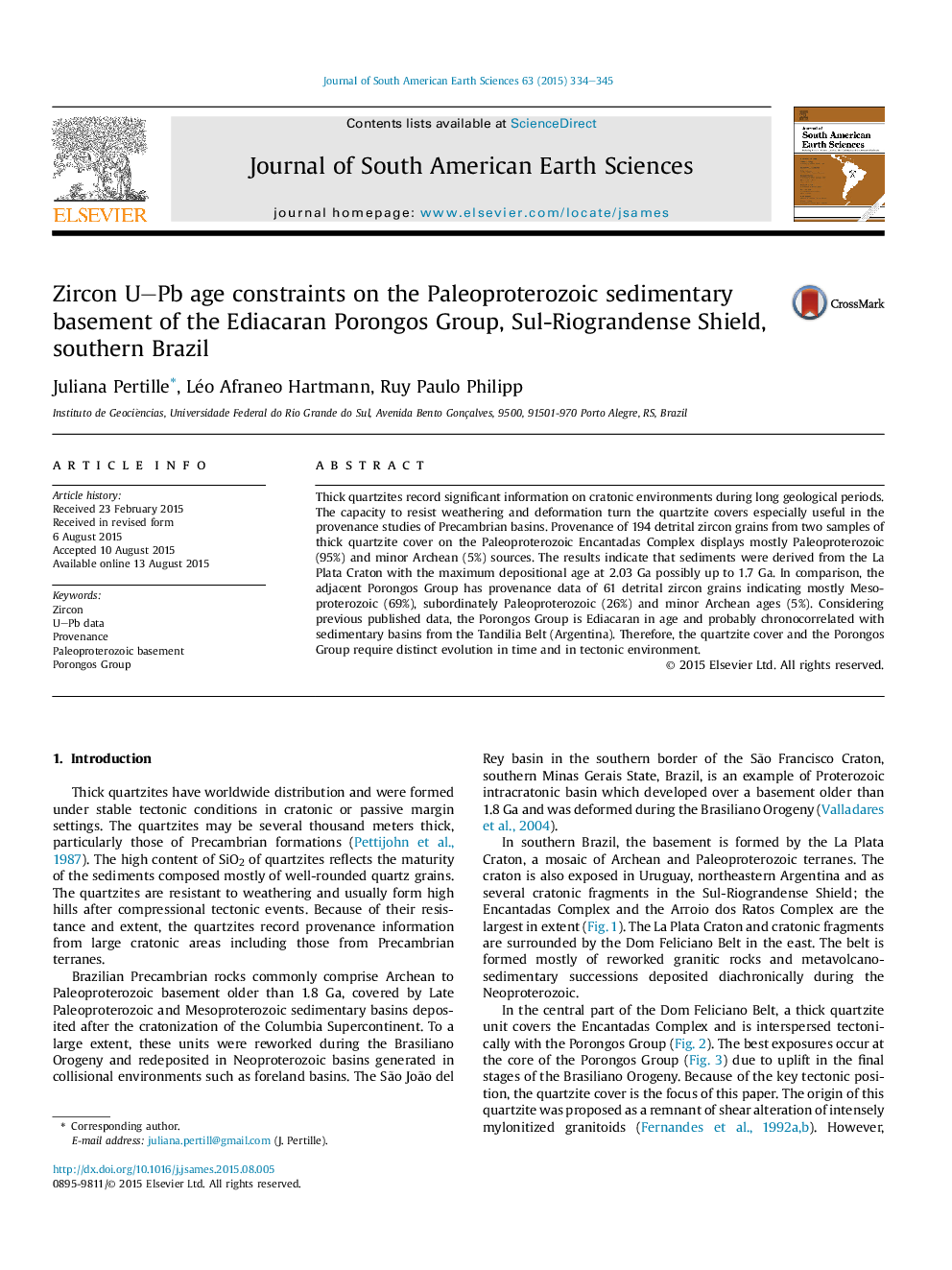| Article ID | Journal | Published Year | Pages | File Type |
|---|---|---|---|---|
| 4682170 | Journal of South American Earth Sciences | 2015 | 12 Pages |
•The maximum depositional age of the Santana Formation is 2.03 Ga possibly up to 1.7 Ga.•The Porongos Group had Paleoproterozoic to Neoproterozoic sources.•The tectonic evolution of the quartzite cover and the Porongos Group was distinct in time and environment.
Thick quartzites record significant information on cratonic environments during long geological periods. The capacity to resist weathering and deformation turn the quartzite covers especially useful in the provenance studies of Precambrian basins. Provenance of 194 detrital zircon grains from two samples of thick quartzite cover on the Paleoproterozoic Encantadas Complex displays mostly Paleoproterozoic (95%) and minor Archean (5%) sources. The results indicate that sediments were derived from the La Plata Craton with the maximum depositional age at 2.03 Ga possibly up to 1.7 Ga. In comparison, the adjacent Porongos Group has provenance data of 61 detrital zircon grains indicating mostly Mesoproterozoic (69%), subordinately Paleoproterozoic (26%) and minor Archean ages (5%). Considering previous published data, the Porongos Group is Ediacaran in age and probably chronocorrelated with sedimentary basins from the Tandilia Belt (Argentina). Therefore, the quartzite cover and the Porongos Group require distinct evolution in time and in tectonic environment.
Graphical abstractFigure optionsDownload full-size imageDownload as PowerPoint slide
